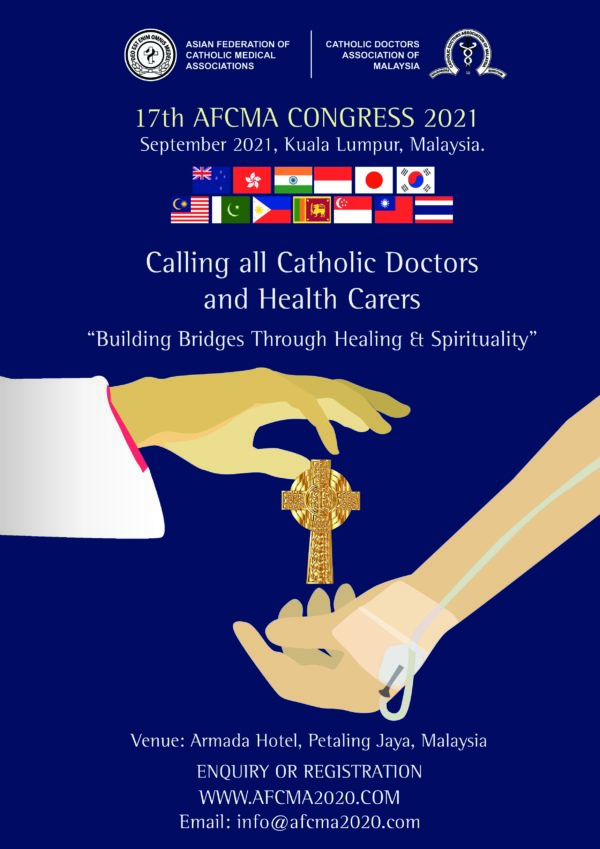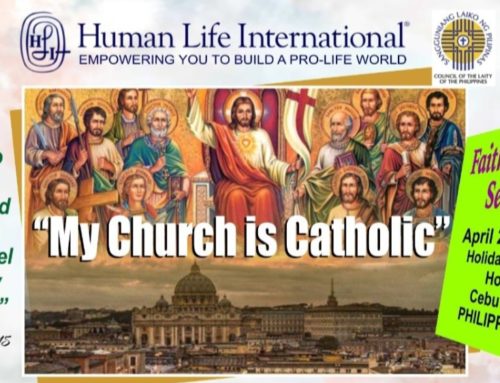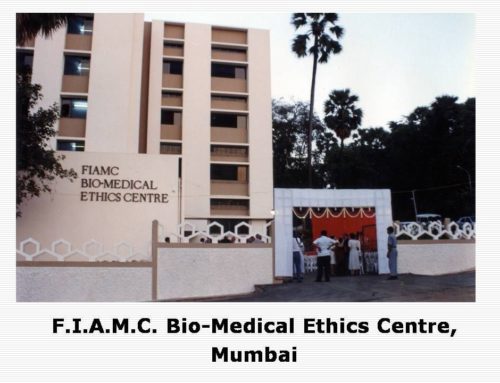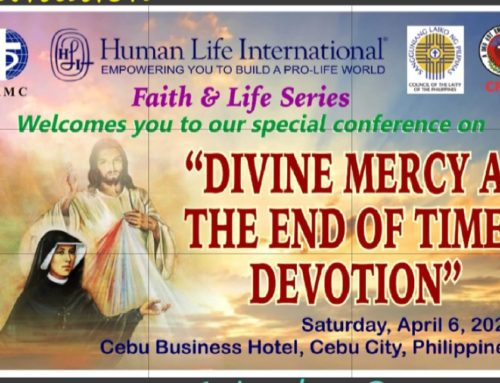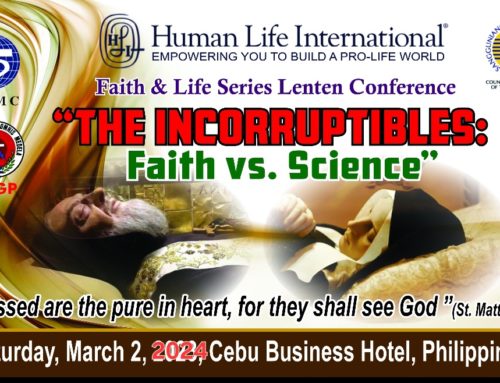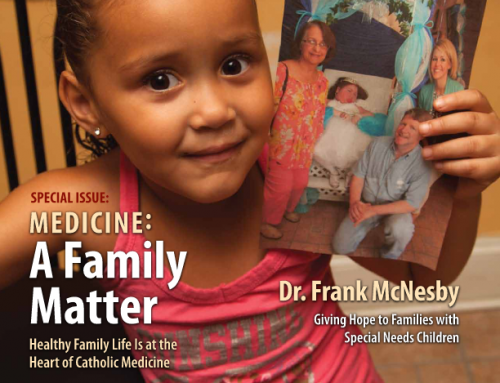The 17th AFCMA Congress 2021 –
The congress of Oct-Nov 2020 has been postponed to 16th September 2021 till 19th September 2021
Website: WWW.AFCMA2020.COM
Dear Brothers and Sisters in Christ,

Peace be with you!
On behalf of the Organising Committee it is my pleasure to welcome you to Malaysia for the 17th AFCMA Congress 2021.
The Theme of the Congress is “Building Bridges through Healing and Spirituality”. Its focus is on helping others through Healing and Spirituality by integrating and co-operating our efforts with other health and faith institutions.
Many Topics are being offered for you to choose from eg. Bioethics and Medical research, Conception and Fertility issues, Victims of abuse (women and child abuse, broken homes,) Mental Health and Addiction (Anxiety, Depression, Suicide, Drug and Alcohol abuse) ,Rehabilitation/ Disabilities/Handicapped(handicapped from birth, physical or mental disabilities, acquired disabilities), Infectious diseases
(HIV, Zika, Ebola), Ageing Community (Geriatrics, Abandoned Elderly, Depression, Isolation), Palliative Medicine (End of life Care and Living Wills), Climate Change and Health (Laudato Si. What does our Holy Father Pope Francis say on the environment and our role as stewards?), Marginalised in Healthcare (Migrants, homeless, Indigenous, Urban Poor, etc.).
We sincerely hope that by working alone or together with people from other Health of Faith institutions eg Tzu Chi, we will be able to emulate the Good Samaritan (Luke 10.30-37) who went out of his way to help the traveller who was robbed and badly beaten by robbers unlike the Priest and Levite who saw but ignored the injured man.
In The Greatest Commandment we are taught “You shall love the Lord ,your God with all your heart,……….and your neighbour as yourself” in order to inherit eternal life (LUKE 10. 27-29). Who is my neighbour? Our neighbour can be anyone irrespective of race, creed, religion, colour, social status, the marginalised, migrant worker, refugee, asylum seeker, a road accident victim, etc..
We hope that you and your spouse will enjoy your stay here in our beautiful country and enjoy our various cultures, different variety of food, go sight seeing, shopping in the Malls and visit the various historical sites like Malacca where St. Francis Xavier once lived. Please also participate in the Scientific Sessions and share your Expertise/Experience with us in upholding our Catholic Church’s teachings.
May Almighty God Bless Us and send the Holy Spirit to guide us and empower us in our deliberations and help to make the 17th AFCMA Congress 2021 a huge success.
Thank you.
In Jesus,
Dr. Freddie Loh,
Organising Chairman
……………………………………………………………………………………………………………………..
Message from the President of FIAMC

« BUILDING BRIDGES THROUGH HEALING AND SPIRITUALITY »
Bernard Ars, M.D., Ph.H..
Spheres of care, medicine and biology, biomedical environments today have a certain craze for spiritual resources as therapeutic agents.
Spirituality can not, however, be considered as belonging to the field of psychology, or even to that of therapy. Nor is spirituality synonymous with religious.
Very schematically, it is necessary to distinguish three types of spirituality:
those based on a religious tradition; those who develop a relationship with God outside any institution, and finally those that do not refer to God or to an institution. (1).
Religious spirituality is characterized by an attachment to an institution endowed with a doctrine that has overcome the test of time and that challenges by a word from elsewhere. It is based on source texts and a community. The accompaniment in faith by an elder considered qualified is encouraged. Interiority, dialogue with God, prayer, are part of traditional practices.
For the Catholic Church, spirituality is, in the most fundamental and etymological sense, “life according to the Spirit”, life in Christ, the life of faith, hope and charity, the life of grace which makes us partakers of the divine nature, essentially through prayer, penance and sacramental life.
For a Catholic Christian, any description or definition of spirituality that does not take into account transcendence is erroneous and can be reduced to psychology.
It is also undeniable that spirituality possesses a “therapeutic” virtue: according to the classical formulation in theology, grace purifies, heals and elevates the soul and therefore any person at the level of participation in the divine life.
Given the deep entanglement of the soul, mind and body, it goes without saying that the spiritual life, as far as it is authentic, reflects on the mental and physical health of the person.
The current biomedical disciplines attribute to spirituality four main characteristics: the quest for meaning and authenticity, relationality, universality and harmony. (2).
Modern medicine plans to detach spirituality from the religious institution and anchor it exclusively in the human being, in every single human being.
It considers as insignificant knowledge and spiritual wisdom archived in religious traditions. With regard to medicine, three factors of a philosophical, historical and cultural nature, integrated, converge to reflect the actual content of this spirituality.
A fundamental distinction is made between religion of the heart and institutional religion (3) which authorizes the transfer of authority from the spirituality of religions to medicine.
There is also a distinction between religious institution and religious experience (4).
The religious institution is the art of gaining divine favors through liturgy, sacrifice, and other procedures of divinity, theology, ceremonies, and ecclesiastical organizations; while religious experience brings together the inner dispositions of man: his conscience and his lucidity in the face of his own needs and his finitude.
These inner dispositions are implemented in the intimate relation of the human being to what he considers to be divinity. The relationship is immediately “heart to heart, soul to soul, between man and its creator.”
This is one more step towards the justification of biomedical appropriation of spiritual distress. Moreover, there has always been a tradition of wonderment of medicine in the harmony, disposition and functions of the organs that make up the human body. (5).
The encounter between spirituality and medicine in contemporary health institutions raises at least three questions:
Firstly, the integration of spirituality by medicine is a proof of its ongoing dehumanization and appears as a criticism of the ever-increasing weight of techno-sciences in the care of patients. (6).
In this sense, we attribute to spirituality today a role that until recently was devolved to bioethics: to serve as a support to counter the inherent dehumanization in contemporary medicine. (7).
Second, the modern biomedical representation of spirituality departs from the perceptions of religious traditions. Indeed, with few exceptions, the disciplines of care might imagine not needing religious traditions or theologians to approach and think about the spiritual phenomenon in the hospital.
Tertio: The encounter between spirituality and medicine forces us to re-think the place occupied by spiritual and religious resources in the life and organization of the hospital.
In the face of these questions, let us reflect on what our spirituality teaches us. Catholic spirituality introduces me and makes me grow in a relationship of love with God. This love is free and disinterested. There is nothing more alien to the gratuitousness of love than to love to obtain a material advantage, even if it is the cure of an illness. “Do not love God for the reward, He is the reward,” St. Augustine said. Our spirituality can not be presented in a utilitarian way, as a mere therapeutic modality.
Christian spirituality removes from suffering its unjust and absurd character, elevating it through Christ, with Him and in Him, at the level of a means of salvation. But, then, how to respect this spirituality of the patient who helps him in his experience without leading to reduce spirituality to a therapeutic technique? If not starting from a healthy anthropology, a natural vision of man, where the soul, the spirit and the body form “a unified whole”, but where unity is realized “without confusion or separation “.
On the practical level, this anthropological consideration, this Christian vision of Man leads us to the following conclusions:
For the non-separation aspect: the patient is entitled to spiritual assistance; for Catholics, it must be assumed by those who have a mandate and competence to do so: priests and pastoral assistants.
For the non-confusing aspect: neither the nursing staff, nor the doctors, nor any other persons not mandated by the Church will set themselves up as “spiritual companions”, even if it is implicit to expect from these professionals that they show great human compassion towards the patient. In the same way, priests and pastoral assistants will refrain from intervening in the medical field.
May the 17th congress – 2021 – of the Asian Federation of Catholic Medical Association, in Kuala Lumpur, be fruitful in reflection and concrete achievements, in “building bridges through healing and spirituality”, for all physicians in Asia, but also for those of the whole world!
Prof.Dr. Bernard Ars, M.D., Ph.D.
President of the International Federation of Catholic Medical Associations.
References:
Xerri J.G. : Le soin dans tous ses états. Desclée de Brouwer, 2011, pp. 244, ISBN: 978-2-220-06283-9.
Jobin G. : Des religions à la spiritualité. Collection Soins et Spiritualités, 3, Lumen Vitae, 2012, pp.106, ISBN: 978-2-87324-432-3.
Rousseau J.J. : Profession de foi du vicaire savoyard. Coll. Folio Essais, 537, Gallimard, 1969.
James W. : The varieties of religious experiences. A study in human nature. London, Rooutlegde, 2008, pp.376.
Pigeaud J. : L’art et le vivant. Coll. Nrf-essais, Gallimard, 1995.
Ars B. : The meaning of Medicine. The human person. Kugler Pub., The Hague, 2001, pp. 194, ISBN : 90-6299-183-1.
Ars B., Montero E. : Suffering and dignity in the twilight of life. Kugler Pub., The Hague, 2004, pp.180, ISBN : 90-6299-197-1.

